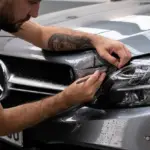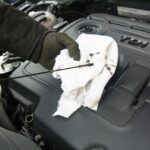Pros and Cons of Buying a 12-Years Old BMW 128i
So, you want to enter the German premium car segment, but you are not exactly willing to pay $40k+? There is some good news for you—the BMW 128i is your wildcard! Of course, the BMW 1 series is not available with inline-6 cylinder engines anymore, so we are talking about 2009 models with sub-100,000 miles on the clock. But before you rush to the used car dealer to find yours, here’s a couple of things you might want to keep in mind and why you might want to keep a BMW 128i owner’s manual close by when you do.

In the long and fruitful history of the famous German carmaker, one car stood up the most and was truly synonymous with BMW. The 2002 model was a compact sedan that was light, powerful, and elegant enough to make BMW a dream car for many guys and girls from that era. In the meantime, cars started to get bigger and heavier and lost that purity in the process. So BMW reinvented all of that with the 2004 128i. They’ve stuck to the basic rules of making driving fun again and add a powerful engine to it.
Here we are looking at a 2009 BMW powered by an NA 3L engine, pumping 230 HP and 200 lb-ft, and pushing the weight of 3252 lbs through the rear wheels. A proper Bimmer. You can get one for around $8-10k, depending on how well-maintained it is. However, you’ll need an owner’s manual to know how to maintain it and maximize your experience with your new (for you) BMW 128i.
Common Problems with 1st-Gen BMW 128i
According to Consumer Reports, there were several recalls, so you’ll have to check if all these recalls are done on your 128i. As recalls are free precautionary part replacements that could fail or are poorly engineered, there are also some expensive problems that owners of this model experienced with their cars.
Oil Consumption Issues
For example, this BMW is powered by a 3L engine that tends to rev higher than your regular V8, thus making it an oil-thirsty one. You’ll have to check the oil level from time to time. Now try opening the hood and find the dipstick without the owner’s manual. Good luck with that. You see, BMW 128i simply don’t have an oil dipstick like most cars out there…
Indeed, there is an oil sensor for that instead of a traditional dipstick here. Luckily, you’ll find step-by-step instructions on how to check the oil level in your BMW 128i owner’s manual. But it’s not like there is a display that continually shows the oil level. There are many parameters that can’t be displayed all the time for obvious reasons, so the easiest way is to follow the instructions in the manual.
Missing the dipstick is not a problem per se, but it can lead to severe issues if you are not monitoring the oil level regularly.
Oil Leaks
Another potential (and somewhat frequent) problem is a leaking oil filter housing gasket. You can replace it by yourself, of course, and shouldn’t take more than 30 minutes if you follow the replacement instructions found in the manual.
This is also something you can easily check before you buy the car and maybe negotiate the price accordingly if an oil leak is found. BMWs are prone to leaks so make sure to either inspect your potential new car or have it inspected by a certified mechanic before shelling out your hard-earned money.
Wheels
Always check for damage marks on the wheels and tires as it could mean that the previous driver has hit many curbs and potholes. That could lead to misaligned wheels and more damage to the suspension. After all, a BMW 128i is expected to be abused.
Also keep an eye on the tire tread wear, as sports cars often tend to come equipped with softer tires that wear out faster. Of course, you can also find all the information you need inside your BMW 128i owner’s manual. And when in doubt, just stick a new set on there and you’ll be good to go!
Most Frequently Replaced Parts for 1st-Gen BMW 128i
Maintenance parts such as oil, air, and cabin air filters, etc., are on top of the list, like with any other car. Disk brakes and calipers follow next as commonly replaced parts, especially as we are talking about a car that can be driven hard. Fast driving also puts a lot of stress on the joints and axles, and they wore faster on this Bavarian speedster.
Shock absorbers are another casualty from the firm ride as they simply have no time to absorb rough potholes and are heavily stressed by the lateral forces while driving fast on tight twisty roads.
Use your BMW 128i owner’s manual to detect what could be the reason for that check engine light on your dash. That light can point out to faulty Variable Valve Timing (VVT) solenoid, as is the usual suspect for any rough sound coming from the engine, a power loss, bad fuel economy—and all of this could lead to even bigger issues.
This condition is often caused by dirty oil that will also indicate that the previous owner didn’t maintain his car properly.
A car battery replacement is also a common problem as the proximity key communicates with the car constantly if you leave it in your car when parked in your garage.
Tips and Tricks to Save on 04-11 BMW 128i Maintenance
Of course, there’s no magic trick here. The easiest way to keep maintenance costs low is to perform regular maintenance according to the manufacturer’s recommendations—and all of that is described in detail in your BMW 128i owner’s manual. Keep an eye on the recommended service intervals so you can react on time and save money on extra replacement parts. And if you know your way around tools, get yourself a BMW 128i repair manual here, which will provide in-detail replacement and troubleshooting procedures so you can fix whatever problem comes your way and save even more.
Whatever you do, just don’t use the term tune-up when bringing your car for a regular checkup, as you’ll give the dealer a chance to change every single bit that does not necessarily need to be changed. Things have changed in recent years and cars don’t typically need tune-ups like they used to anymore. For example, these days, spark plugs are designed to last almost a lifetime—no need to change them every time Spring comes around anymore.
Another tip is to buy one of those OBD2 scanners and read the DTC codes, so you aren’t at the dealer’s mercy next time the check engine light pops up. Even if you don’t work on your car by yourself, a $30-40 OBD2 scanner will at least let you know what to expect.
Last Words
This little Bimmer is a hell of fun to drive. But before you commit, be smart and get a BMW 128i owner’s manual. Of course, a repair manual would be even better but the owner’s manual is the bare minimum you’ll need to make sure you save on future maintenance. That way, you’ll be better prepared and won’t get carried away with buying the car before you’ve checked it properly. It is one thing to idolize your dream car, but the reality could be harsh and expensive.







![Top 5 Best OBD2 Scanner [2024 Guide] Top 5 Best OBD2 Scanner [2024 Guide]](https://www.mechanicalbooster.com/wp-content/uploads/2022/06/BlueDriver-Pro-OBD2-Bluetooth-Car-Diagnostic-Scan-Tool-300x209.jpg)

